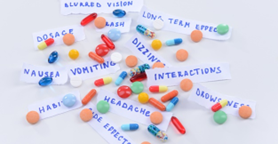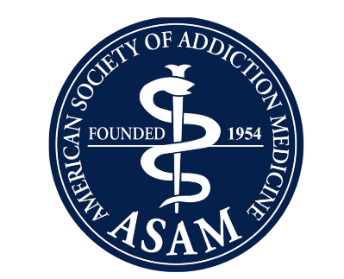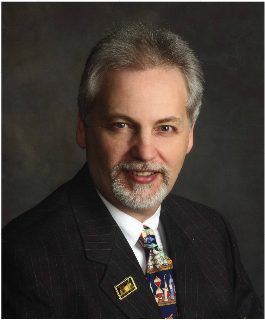Addiction and Pseudo-Addiction, An advanced CE
Addiction and Pseudo-Addiction
An Advanced CE
Author: Mark Parkinson BsPharm: President AFC-CE
Credit Hours 3 - Approximate time required: 180 min.
Educational Goal
Tell of a case study of pseudo-addiction and teach how to deal with addiction side effects of opiate drugs.
Educational Objectives
- Present a review of possible case of pseudo-addiction
- Tell of how opiates work by mimicking endorphins
- Tell of the consequences of long term opiate use
- Discuss about the principle of pseudo-addiction
- Present the In-Home caregiving model of care
Procedure:
Read the course materials. 2. Click on exam portal [Take Exam]. 3. If you have not done so yet fill in Register form (username must be the name you want on your CE certificate). 4. Log in 5. Take exam. 6. Click on [Show Results] when done and follow the instructions that appear. 7. A score of 70% or better is considered passing and a Certificate of Completion will be generated for your records.
Disclaimer
The information presented in this activity is not meant contraindications may be of concern. All applicable manufacturers’ product information should be reviewed before use. The author and publisher of this continuing education program have made all reasonable efforts to ensure that all information contained herein is accurate in accordance with the latest available scientific knowledge at the time of acceptance for publication. Nutritional products discussed are not intended for the diagnosis, treatment, cure, or prevention of any disease.to serve as a guideline for patient management. All procedures, medications, or other courses of diagnosis or treatment discussed or suggested in this article should not be used by care providers without evaluation of their patients’ Doctor. Some conditions and possible
Addiction and Pseudo-addiction.
An Advanced CE.
Note to reader. I initially started writing this course as a simple easy to read 1 hour course. The more I researched, the more the topic expanded and the more complex it became. I gave up on simple and turned the course into a more advanced and complex 3-hour CE. Hang in there with me. Even though some will struggle with a few of the advanced details, I promise the extra effort will be worth it. In the second half of the lesson, I have managed to insert a lot of the tricks I learned over the years on how to influence a doctor. If you are still put off, well, I have plenty of easier CEs to choose from. Mark P
I recently moved my 87-year-old Mother-in-law into my home. As a result, I find myself in the In-home care biz again. I’m back in the care trenches, battling my way through solving medical problems and trying to get the medical community to cooperate. You know what I have found out. Some doctors are still clueless about how to treat patients with In-home caregivers. I find myself having to pull the, I’m a trained pharmacist card before I can get them to realize that there is a care professional living with and skillfully managing their patient for them. That should change the way they treat my mom, but sometimes it doesn’t. For example, they should loosen up the number of prescriptions that are written for pain. But I find that I am having to fight far too much to get what I think she needs to live a comfortable life.
Here are the details. My mom has a bad arthritis problem. That means she is a chronic pain patient. She wants to have a constant supply of Vicodin, a narcotic drug used to manage pain. The doctor is worried about opiate addiction and keeps trying to push Ibuprofen on her to manage the pain. Unfortunately, my mom also has stage 4 kidney failure issues. The more ibuprofen she takes the faster her kidneys will fail completely. So what am I supposed to do? My mother-in-law is complaining of unresolved pain issues and the doctor is saying that is just a narcotic addiction talking. So now my mom is taking more ibuprofen than is good for her just to get by.
Drug terminology- opiate and narcotic drugs work the same way in the body. So from now on when I say opiates I am also talking about narcotic drugs.
Who’s right and who’s wrong? As a pharmacist and an experienced In-home caregiver, I can say they are both right and they are both wrong. Let’s explore the questions together and later I’ll tell you the steps I am taking to resolve the issue. That is where I stuck all my professional caregiver secrets.
In my opinion, this is a case of pseudo-addiction versus actual addiction versus opiate dependence. These are terms that you as a caregiver need to understand and be able to use appropriately in your care practice. It’s kind of weird, isn’t it? You as a professional caregiver have a care practice. Just like any other health professional. The thought certainly changes the way you look at your day-to-day activities, doesn’t it? You have to understand what’s going on. That understanding will give you the power to try to influence the outcomes when you think your resident is not being taken care of adequately. It will also enable you to safeguard your resident from the unwanted side effects of any therapy. That is what you are supposed to do as the patient’s advocate.
So, let’s broaden your understanding of the important terms. Fair warning, we’re going on a deep dive into the workings of the brain and nervous system. Hang in there with me. When I’m done, a lot of things will be so much clearer to you.
What Normally Occurs
Did you know that our bodies make their own opiate-like chemicals. You might have heard of the term endorphins. According to the website, Cleveland Clinic:
“Endorphins are chemicals (hormones) your body releases when it feels pain or stress. They’re released during pleasurable activities such as exercise, massage, eating and sex too. Endorphins help relieve pain, reduce stress and improve your sense of well-being.
Endorphins are created in your pituitary gland and hypothalamus, both located in the brain. Endorphins are a type of neurotransmitter, or messenger in your body. They attach to your brain’s reward centers (opioid receptors) and carry signals across your nervous system.”
When our brain senses a stressor, either emotional or pain, it sends a signal to the pituitary gland to release what some people call the “Happy Hormone”. The endorphins travel around the body seeking to place themselves into specialized receptors that stick outside of cells. These receptors are called mu receptors. When the endorphins are placed in the mu receptors, cellular processes are started that help us cope with the stressor. When the stressor is gone the pituitary gland stops making endorphins and we get back to feeling normal again.
Endorphins are also part of our reward system. They help us experience pleasure in doing the things our bodies need to do. When we do things like eat, have sex, exercise, or win a competition, endorphins are released. We experience pleasure in doing those activities. The pleasure encourages us to continue doing those beneficial activities in the future.
This is all part of our homeostatic mechanisms designed to bring us back to normal and keep us there, despite the changes that occur around us or injuries that we sustain. Our bodies put a lot of effort into keeping the endorphins flowing at the proper rate so that we can function normally. No matter what bad things happen or what needs we have.
Taking advantage of the system
Medical science has found that a class of chemicals called opiates also fits into the mu receptors. In fact, they fit so well that we also call the mu receptors, opiate receptors. This has enabled opioid substances to be used in pain management. Their use as painkillers dates back to antiquity.
The website MayoClinic.org summarizes the therapeutic effects of opioids as follows
“Opioids trigger the release of endorphins, your brain's feel-good neurotransmitters. Endorphins muffle your perception of pain and boost feelings of pleasure, creating a temporary but powerful sense of well-being”
Whenever there is a pain management need, doctors can give an opiate drug (also known as narcotics). The medication artificially increases the natural pain-relieving systems of our bodies. In addition, it makes the patient feel good about it. It may seem like the perfect drug solution to pain. In the short term, opiates are very effective. But in the long term, things start to go astray.
An Unwanted Drug Side Effect
Those who are debilitated by pain greatly appreciate the opiates’ ability to quickly and reliably relieve their suffering. Those who have chronic pain issues learn to rely on opiate use to function on a day-to-day basis. Unfortunately with long-term manipulation of the endorphin system, other effects start to appear. More and more drug is needed to maintain effective pain relief. Higher doses are also related to developing a craving for the euphoria the drug can give. These cravings lead the patient to misuse the drug to feel good. The euphoria becomes more important than the pain relief. Soon addictive behaviors start to negatively affect the patient’s life. The patient wants to keep taking the drugs even if their use is causing greater harm.
I think it is important for you as a caregiver to understand why and how these negative effects can occur. With that greater understanding, you will be better able to manage the situation more effectively.
False perception of healing
Even though opioids are very good at pain relief they do almost nothing to heal the underlying cause of the pain. Unfortunately, the patient does not know this. They start to falsely associate feeling good with their injuries being healed. Of course that never happens, no matter how good they feel. This incorrect expectation leads to dependence on the euphoria over pain relief to lead a normal life.
Sedation
There are cells with mu receptors that when activated have a sedating effect. In normal function these cells are telling the body to slow down, you’re injuring yourself. They are also telling the body to rest so it can heal faster. When you artificially increase the activation of the opiate receptors you can over sedate the patient and make them drowsy or dizzy. That is why each bottle of narcotics and opiates has a drowsiness/ do not operate heavy machinery warning on the label.
If these two were the only side effects you would have to worry about, that would be okay because you could handle those. But there are other unwanted drug effects that come with long-term use of the drugs that are much more problematic.
Tolerance
When we experience stressors long term, our body is able to adapt by decreasing the amount of mu receptors on cell surfaces. We become less able to feel the negative effects of the stressor. It allows us to tolerate the stressor more efficiently over time. In addition, the body naturally adapts to the extra sedation present by increasing the amount of chemicals that promote alertness. This is part of our natural “toughing up” process. When the stress levels are reduced the number of receptors goes back to normal levels and alertness chemical production is reduced. The body doesn’t need them anymore so they go away and be themselves.
When you artificially increase the activation of the opiate receptors the body is naturally stimulated to change the number of receptors that are present. Over time, that decreases the body’s reaction to the drug dose. You have to start taking more of the drug to get the same reaction. It is an unavoidable reaction to long-term opiate drug use.
Dependence and Withdrawal Symptoms
Long-term opiate users become dependent on the drug to feel normal. Even if there are no pain symptoms to control. The reason for dependence takes some explanation to understand. Long-term users reach an artificial equilibrium of endorphin/opiate receptor levels. If the drug is discontinued the support for that level is now gone and withdrawal symptoms occur. Ironically the absence of drugs has now become the stressor to the system. When there is a sudden discontinuation of long-term opiate drug use there is a sudden reduction of its sedation effect. Yet there is the same amount of alertness chemicals present in the nerve cells. The results are an overstimulation of the nervous system. The unpleasant symptoms experienced by the drug user include jitteriness, anxiety, sleeplessness, muscle cramps, muscle aches, flu-like symptoms, pupil dilation, nausea, vomiting, and diarrhea. Frequently when withdrawal symptoms occur, the sufferer does not know the underlying causes of the symptoms. This creates fear and they falsely think that real damage is occurring. Often, they say they feel like they are dying. Unfortunately though, real deaths have been reported in some severe cases of withdrawal.
Addiction
Defining addiction is very difficult because the term means different things to different people. Because of the negative reputation it has we tend to define it differently depending on how well we know the person who is addicted. In general, we tend to go easier on ourselves and our loved ones and harsher on complete strangers. Also, the line between the definition of addiction and dependence blur. Many people consider them as the same thing. Thinking in these terms is wrong and leads patients to be misdiagnosed and or avoid preventative therapies and effective treatments.
The American Society of Addiction Medicine defines addictions as,
“Addiction is a treatable, chronic medical disease involving complex interactions among brain circuits, genetics, the environment, and an individual’s life experiences. People with addiction use substances or engage in behaviors that become compulsive and often continue despite harmful consequences.”
In layman's terms, people who are addicted have a near-irresistible urge to take drugs, knowing full well that they are causing harm to themselves and the people around them.
The details of how opiate addiction occurs are not well understood. Why one person becomes addicted and others on the same dose don’t, is a matter of ongoing research.
Major factors in becoming addicted.
- Continued opiate use creates artificially high opiate receptor activation. The body adjusts itself to this new normal. Basically, you’re rewiring the brain. Some of these adjustments reduce the brain’s ability to think about the consequences of their actions. They are physically losing their ability to think straight.
- Some people are genetically more susceptible to these changes in the brain’s rewiring than others. Or they are halfway there already because of damage caused by other illnesses or have birth defects in the brain.
- The addicted surround themselves in an environment that reduces the negative consequences of their actions or allows the patient to delude themselves about what is actually happening. Thus, making it easier to become addicted.
So going back to my mom's case. Knowing all of the mechanisms that can lead to misuse and abuse, do you think the doctor’s opiate addiction fears were justified?
In my opinion, the answer is yes and no.
Yes, I agree that there is a real possibility of addiction.
No, the doctor did not even take the time to determine if my Mom has learned to equate the euphoria as being effective pain management instead of the absence of pain. There were no questions about any addictive behaviors at all. In my opinion, the doctor thought that asking for more prescriptions was by itself a sign of an addiction developing. Having been denied effective and safe pain therapy my Mom is now getting really grouchy and demanding. Ironically she is starting to behave like she is addicted. My mom’s case is a classic example of Pseudo-addiction.
Pseudo-addiction
 According to the website Medical News Today
According to the website Medical News Today
“Pseudoaddiction is a term that describes when someone with untreated or improperly managed pain displays substance misuse in a way that mimics addiction.”
It is a case of misuse of the prescription because of mistreatment of the patient, not because of addiction. It results from a series of events that are wrought with communication errors and divergent expectations.
- A chronic pain sufferer goes to the doctor expecting effective pain relief therapy.
- The doctor prescribes a drug regime that they feel is adequate to manage the pain.
- The patient follows the therapy but still experiences significant pain. As a result, the patient either
- Loses faith in the doctors’ instructions and takes more of the opiate than was prescribed. Thus, they run out of the opiate drug too soon and go back to the doctor for more too soon.
- The patient follows the prescription but is in pain for the entire course of therapy. They go back to the doctor and try to talk the doctor into giving them a greater amount of opiate drugs.
- The doctor gets mad at the patient for not following their instructions or does not believe the patient’s reports of inadequate pain control. As a result, the doctor either
- Makes the patient wait for a new prescription for opiate drugs
- Gives the patient a new opiate prescription but does not increase the dose.
- The patient loses faith in the doctor’s ability to treat their pain and takes matters into their own hands and either
- Seeks for another doctor, based predominately on their willingness to give larger prescriptions of opiate drugs. (Doctor shopping)
- Keeps their original doctor but fulfills their unmet needs by going to multiple prescribers at one time. For example, dentists, ER doctors etc.… (Opiate shopping)
- Obtains additional opiate drugs by questionable means. Either stealing other patients’ opiates or buying them illegally from a drug dealer. (Diversion)
- Follows the original therapy but becomes fixated on their pain symptoms and drug use. They severely alter their lifestyle and social interactions in an attempt to avoid the onset of pain. (Pain over reporting and or over-adapting their life around their drug use)
From the uninformed Doctor’s perspective, the above are signs of drug abuse. In reality, inadequately treated patients are not abusing opiate drugs but misusing pain therapy in order to control their unresolved pain issues. In the case of pseudo-addiction, abuse, and misuse are not the same thing.
So going back to the original case again, knowing the possible sequence of events that has occurred, do you think my Mom is justified in her mistrust of the Doctor’s ability to adequately treat her pain?
In my opinion, the answer is yes and no.
Yes, I agree that my Mom is being undertreated.
Yes, I know my Mom is understandably overly motivated to go beyond the Doctor’s original opiate drug therapy instructions.
No, I do not think that my Mom is communicating with the Doctor enough to make them understand the circumstances correctly.
No, I think that my Mom incorrectly thinks that the absence of pain means that she is getting healed. So as a result, she concentrates only on opiate therapy. She is stuck in her thinking that it is the best way to get to make the pain problem go away.
It is easy to see that if things don’t change, my Mom is heading for trouble. She is already severely curtailing her interaction with life to avoid the possibility of creating extra pain. She is also taking more ibuprofen than what is good for her kidneys. If you are thinking that you could step in and help- you’re on the right track. In-home caregivers are particularly situated to help work out the problems associated with pseudo-addiction. But before we get into that, there are a few more facts that you need to know.
Onset of Dependence and Addiction
It is almost impossible to tell when dependence and addiction are starting to occur. As you have noticed the signs of Addiction are almost the same for pseudo-addiction. Even pain management experts have difficulties in seeing the telltale signs in the beginning. So how are you the caregiver supposed to know when your resident is heading down the addiction path?
To help you 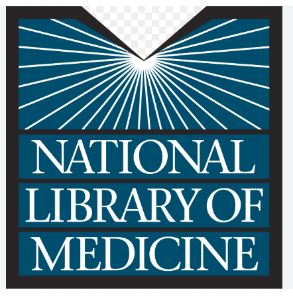 with a broader understanding of the issue I have found an article from the website NIH National Library of Medicine entitled Opiate Use Disorder. The article describes a mental disorder found in the Diagnostic and Statistical Manual of Mental Disorders, Fifth Edition, (DSM-5). It states,
with a broader understanding of the issue I have found an article from the website NIH National Library of Medicine entitled Opiate Use Disorder. The article describes a mental disorder found in the Diagnostic and Statistical Manual of Mental Disorders, Fifth Edition, (DSM-5). It states,
“Opioid use disorder is the chronic use of opioids that causes clinically significant distress or impairment.”
Sounds like a good enough description of addiction to me. The article continues.
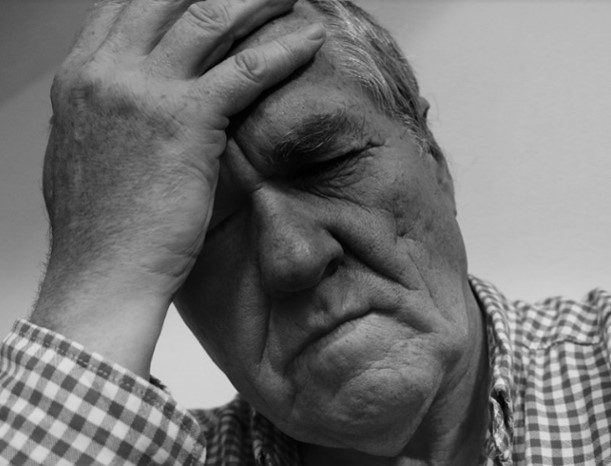 “The opioid-use disorder is defined as opioid use and the repeated occurrence within 12 months of two or more of eleven problems. The problems include opioid withdrawal with stopping opioid use, giving up essential life events for opioid use, and excessive time using opioids. The individual also has significant impairment or distress as a result of opioid use. Six or more items on the diagnostic criteria indicate a severe condition.
“The opioid-use disorder is defined as opioid use and the repeated occurrence within 12 months of two or more of eleven problems. The problems include opioid withdrawal with stopping opioid use, giving up essential life events for opioid use, and excessive time using opioids. The individual also has significant impairment or distress as a result of opioid use. Six or more items on the diagnostic criteria indicate a severe condition.
The signs and symptoms of opioid use disorder include drug-seeking behavior, legal or social ramifications due to opioid use, and multiple opioid prescriptions from different clinicians. Furthermore, various medical complications from the use of opioids, opioid cravings, increased opioid usage over time, and symptoms of opioid withdrawal with stopping opioids.
A list of the eleven problems is given below:
- Continued use despite worsening physical or psychological health
- Continued use leading to social and interpersonal consequences
- Decreased social or recreational activities
- Difficulty fulfilling professional duties at school or work
- Excessive time to obtain opioids, or recover from taking them
- More taken than intended
- The individual has cravings
- The individual is unable to decrease the amount used
- Tolerance
- Using despite it being physically dangerous settings
- Withdrawal
A full social history and mental health history should be a part of the history for a patient meeting the criteria of an opioid use disorder. Furthermore, the patient's previous injury history should be recorded.
Opioid withdrawal symptoms include abdominal cramps, craving, agitation, diarrhea, pupil dilation, anxiety, elevated blood pressure, sneezing, sweating, elevated heart rate, tearing, shakiness, muscle pain, rhinorrhea, goosebumps, and insomnia.
Opioid intoxication symptoms include confusion, miosis, hypersomnia, nausea, euphoria, constipation, and decreased pain perception.
For suspected opioid overdose, on a physical exam, there are pinpoint pupils. The patient can be hypothermic or bradycardic, with limited responsiveness or unconsciousness.”
This is how mental health specialists describe and diagnose opiate addiction. I hope you found the above quotes useful in clarifying the confusing issues related to opiate addiction and pseudo-addiction issues. I certainly did.
The homeostatic mechanisms of endorphins and opiate receptors are quite dynamic. Physical withdrawal and dependence issues usually resolve themselves in a couple of weeks, depending upon the severity of the case.
Emotional and behavioral problems are resolved much more slowly. Old habits need to be broken. Attitudes and expectations have to be brought closer to reality. New coping abilities to stressors have to replace drug-based coping strategies. Drug use supporting environments have to change and drug craving triggers have to be identified and avoided. If these issues are not handled appropriately then addiction relapses are almost unavoidable.
That is a long list of issues. Too long and difficult for an In-home caregiver to handle by themselves. Smart adult foster care providers will assemble a team of other health professionals to help tackle difficult cases.
Other side effects of opiate issues
Addiction is not the only opiate side effect that you as a caregiver will have to manage. Other possible problems include-
- Nausea and vomiting are always a possibility when taking a drug. Food does not affect opiates so in the case of nausea, soda crackers are an easy first step to try.
- Some people are allergic to opiates so watch for rash and itching.
- Dry mouth and constipation are the result of the opiates slowing down nerve transmissions. Drinking extra water is an easy first step. Stimulation of function may also be needed. Sucking on a tart candy will help the dry mouth. A stimulant laxative may be needed to relieve constipation.
- Respiratory depression is a major cause of death in overdosing. Monitor closely breathing function in those with compromised lung function.
In-home Caregivers and Pain Management
For those who have stuck it out so far congratulations. You now know enough to start talking with doctors and nurses competently about opiate use problems. But how do you have those conversations without being thought of as an uneducated fool?
There are several weaknesses in the Adult Foster Care industry.
- There is no diploma hanging on your wall certifying you know what you are talking about.
- Far too many see you as a glorified babysitter who is not supposed to think for themselves about medical matters.
- There is no place where you can learn all the good In-home caregiving tricks. Everything is mostly “teach yourself as you go”.
- We tend to be very isolated from other in-home caregivers. Why would you tell your competition all your best caregiving secrets?
This is where I come in. I am not your competition. I am going to give you all my best In-home caregiving secrets. They will help you get around not having a degree and being viewed as being on the lowest rung of the medical profession ladder. See, I told you that I would make it worth your while to struggle through all this advanced material.
Let me start by talking about what I call the In-home Caregiving model. In-home caregiving is different from caregiving in a nursing home or hospital. You have an advantage that those facilities don’t have. Let me explain.
The Adult Foster Providers Care Model
Adult Foster Care providers are the only medical profession that invite their patients into their homes so that they can take care of them. That living arrangement allows you to act as the agent of the doctor and act as the advocate of the patient. Both servant and supervisor of the desires of both patient and doctor. To take advantage of that aspect I present to you the following seven-step caregiving plan.
The In-home Caregiving Model
- Help the patient convey the details of their health problem to the doctor
- Confirm that the patient understands the details of the therapy the doctor chooses to implement. What the therapy does, what are the goals of the treatment, and what the doctor wants the patient to do.
- Ensure that the doctors’ prescribed therapy is being followed correctly.
- Report back to the doctor about the therapy's effectiveness and what problems have occurred.
- Confirm that the doctor understands the feedback being told to them.
- Question the doctor about all therapy choices and possible alternative therapies.
- Safeguard the patient by ensuring that the resident’s needs are ultimately being met.
In this model of care the In-home care provider ensures that proper communication is occurring between patient and doctor, monitors the therapy for effect, and follows up on any concerns that may arise. Each step is important and is flexible enough to be able to apply it to any situation.
In regard to pain management, this is what I would do if I were following the above seven steps of action.
Step 1. Ask the resident the questions that you think the doctor will ask before the appointment. That would include
- Where is the pain located?
- What causes the pain to happen?
- How severe the pain is. (Use the pain scale of 1 to 10, ten being the worse)
- How frequently does the pain occur?
- How long does the pain last?
The resident is now better prepared to communicate their needs to the doctor, and you are also better prepared to fill in any details that may be forgotten by the resident.
Step 2. After the doctor chooses a therapy, ask the doctor
- What is the therapy supposed to do, and how does it work?
- What are the goals of the treatment?
- Are there any specific instructions that need to be followed?
By hearing the answers to these questions, the patient gains a more realistic expectation of therapy. Also, the doctor sees that there is a care professional who is ready to monitor the therapy for effectiveness. If this line of questioning annoys the doctor, it informs you that there may be potential problems in the future that you may have to deal with. Most likely though, it will surprise and please the doctor when they understand what you are trying to do.
Step 3. Before you leave, tell the doctor that you will be charting the administration of any drugs in a MARS and that you will give them a copy if they desire it. More importantly, tell them that you will also be using a PRN log to keep track of the therapy’s outcomes. The more information a doctor has the better decisions they make.
Step 4. a) Ask the doctor what reporting they need to have and when they would like to have it. This is going to surprise the doctor. Nobody but a care professional asks those questions. It establishes a whole new level of doctor-patient communication expectations.
- b) When you pick up the prescription, note the possible side effects that are mentioned in the accompanying patient education papers. It will provide you with a list of things to monitor for.
- c) Report back to the doctor if the goals of therapy are being met. Also, report problems or concerns that you or the patient have. I suggest that you do this even if the doctor says that you don’t need to. It adds a layer of doctor involvement and accountability. It discourages the old “prescribe and forget” kind of therapy that could happen in a busy doctor’s office. It also provides critical documentation that you will need if you have to do battle with the doctor over issues that may arise in the future. Like if the pain is not being relieved or side effects are hurting the patient. If you do not report back, the doctor will assume that everything is going well in the therapy.
Step 5. If the doctor does not respond to your concerns in a favorable way, you will have to be prepared to do battle to get what your residents need. I think the safest way for you to challenge the doctor is by asking questions. The questions should encourage the doctor to explain any concerns that they have. Their responses will also help you determine if the doctor truly understands what is going on.
Here is an example of the type of conversation that I am talking about.
Caregiver, “I noticed that you did not renew the Vicodin prescription for my resident. What concerns do you have that are preventing you from giving more refills?”
Doctor, “I don’t think there is a need for the narcotic anymore.”
Caregiver, “Did you see the PRN report I sent to your office? It reports that the frequency of administration is not diminishing. Does that indicate that there is still a need for the prescription?”
Doctor, “That also might suggest that dependence is developing. I don’t want the patient to get addicted.”
Caregiver, “I understand your fears, but my resident is still suffering in pain. What information do you need that I can monitor for you that would reduce your concerns?
Step 6. If I have gotten this far in the action steps and am still having difficulties, I know it’s time to start thinking outside the box. As a caregiver, I know that I can’t make changes to therapy. But as the patient's advocate, I know that I have the right to ask the doctor about other treatment options or adjust the current therapy. This step gets tricky. How do you influence the doctor when they think that they’re smart and you’re not? Again, I start by asking questions. I have found that the more informed the questions are, the harder it is for the doctor to ignore my subtle attempts to influence their choice of therapies.
Here are some examples.
I was told by the pharmacist that all Nsaids, specifically Ibuprofen, damage the kidneys. Do you think that the possibility of narcotic addiction outweighs the kidney damage that is happening?
I have noticed that addiction means different things to different people. How do you define addiction? (doctor’s answer) Hum, I am having difficulty seeing those aspects in my resident’s behavior. How would you suggest I monitor the patient for those addiction symptoms? (doctor’s answer) When should I report back to you my observations?
To do this step right, you have to know what you are talking about, or you come off as a fool. I have the advantage of being a pharmacist. You will have to do some research and possibly quote some articles that you have read. For example;
I was reading from the Royal College of Anesthetists website that “Patients using intermittent opioid dosing regimens might not become tolerant to side effects.” Could we use intermittent opiate dosing for my resident’s chronic pain problems to help avoid dependence and still take advantage of the medication’s powerful effects?
Step 7. The patients’ needs need to be met. The hard choices
As a licensed caregiver, you have to follow the doctor’s instructions no matter what. But the patient has the right to do whatever they want. Their needs and desires trump the desires and instructions of the doctor. Even though you have tried very hard to make everything work out, sometimes that just don’t. To meet the needs of your resident you (the advocate) will have to fire the doctor and get a new one. You will need to have a long talk with the resident, their family, and or the person who has power of attorney over the resident to do so.
This is not done lightly. Reputations are on the line. You will find that doctors talk to each other, and gossip is spread between doctor’s offices. There is a danger that you or the patient gets labeled as being uncooperative and the same difficulties follow you to the new doctor. To avoid this problem, you have to use a lot of tact with the old doctor, (you might have to work with them again after all). In communicating with the new doctor just state in a matter-of-fact way what you think the resident’s needs are. Don’t accuse the old doctor of anything and discourage the patient from complaining about the old doctor with the new one. Even though it is human nature to justify an old doctor being fired by pointing out their faults, there really is no need to. A patient can switch doctors anytime they want and for any reason they want. They don’t have to justify their actions to anyone and it’s better if they don’t.
On the other hand, if the new doctor comes to the same conclusions as the last one, you and the resident might have to re-evaluate your positions on the topic. Sometimes practicality wins out over idealism.
In regard to chronic pain issues, there might be a third option available for you to pursue. There are clinicians who specialize in pain management. To not insult the old doctor, I recommend that you act as a concerned third party and avoid direct confrontation. State that the patient is having a lot of difficulties with the situation (purposely be vague about the details). Bring up the idea that you think the patient will be more cooperative with a doctor who specializes in pain management. Ask the doctor for a referral for insurance purposes. You will note that by using these tactics you have skillfully diverted all blame away from the doctor. In the long run, things will be better for you and your residents if you do.
What I am going to do for my Mom
Back to my Mother-in-law’s case. She has decided that she wants a new doctor. She has given me a shopping list of attributes she wants her new doctor to have. I am finding it difficult to find her the perfect doctor she wants. She may have to settle for a little less perfection.
Surprisingly, in going through step 5 of the action plan the old doctor was the one who suggested the pain specialist option. I think the doctor secretly doesn’t want to deal with the hassles of addiction versus pseudo-addiction problems. Regardless of that, my mom still wants her perfect doctor. We’ll see if I can make it happen for her.
There may be a few of you who notice that I am not fully practicing what I preach with my Mother-in-law. I am having extra difficulties because my mother suffers from Son-in-law syndrome. She automatically thinks I am stupid because I am the son-in-law and she is much smarter than me despite my degree and decades of experience. Go figure. Wish me luck in my struggles with the old coot.
Conclusion
Because opiate and narcotic drugs activate the body's own pain-relieving systems so effectively, they are often the preferred medication in treating short-term pain. Unfortunately, there are dependence, withdrawal, and addiction risks if the opiates are used chronically. The patients may erroneously come to believe that feeling good is the same as pain relief. They may seek opiates for the euphoria effect even if it harms them. If the patient crosses over from pain relief to the need to feel euphoria, they are on the pathway to addiction. They need to be protected against this unwanted side effect.
These concerns lead doctors to deny their patients long-term opiate therapy. If this action leads patients to suffer because of inadequate pain relief, they may misuse opiate therapy in ways that mimic addiction symptoms.
Adult Foster Care providers are in an excellent position to resolve such pseudo-addiction issues by being both servant and supervisor to both doctors’ and residents’ needs. The In-Home care model is an effective way to work through these problems and greatly reduce the possibility of pseudo-addiction occurring. I hope that giving you so many details on how I would handle the situation helps you formulate your own plan of action.
As always, Good Luck in your caregiving efforts.
Mark Parkinson BsPharm
References:
- Marion Greene, R. Andrew Chambers. Pseudoaddiction: Fact or Fiction? An Investigation of the Medical Literature. National Library of Medicine NIH. PMCID: PMC4628053. Oct. ,15 https://www.ncbi.nlm.nih.gov/pmc/articles/PMC4628053/
- Jennifer Huizen. What to know about pseudoaddiction. Medical News Today.com. Mar 3,23 https://www.medicalnewstoday.com/articles/pseudoaddiction
- Opioid addiction. gov National Library Of Medicine NIH. 2023. https://medlineplus.gov/genetics/condition/opioid-addiction/
- How opioid use disorder occurs. org. Nov 29,23 https://www.mayoclinic.org/diseases-conditions/prescription-drug-abuse/in-depth/how-opioid-addiction-occurs/art-20360372#:~:text=Opioids%20are%20highly%20addictive%2C%20in,powerful%20sense%20of%20well%2Dbeing.
- Thomas R. Kosten, Tony P. George. The Neurobiology of Opioid Dependence: Implications for Treatment. Sci Pract Perspect. 2002 Jul; 1(1): 13–20. National Library of Medicine NIH. https://www.ncbi.nlm.nih.gov/pmc/articles/PMC2851054/
- Ream Al-Hasani, Michael R. Bruchas. Molecular Mechanisms of Opioid Receptor-dependent Signaling and Behavior. Anesthesiology December 2011, Vol. 115, 1363–1381.https://pubs.asahq.org/anesthesiology/article/115/6/1363/13046/Molecular-Mechanisms-of-Opioid-Receptor-dependent
- Shane Darke, Sarah Larney, Michael Farrell. Yes, people can die from opiate withdrawal. Addiction, Society for the Study of Addiction SSA. Aug 11,16. https://onlinelibrary.wiley.com/doi/full/10.1111/add.13512
- What is the definition of addiction?. American Society of Addiction Medicine.org. Sept.15,19. https://www.asam.org/quality-care/definition-of-addiction
- Side effects of opioids. Faculty of Pain Medicine of the Royal College of Anesthetists 2023. https://fpm.ac.uk/opioids-aware-clinical-use-opioids/side-effects-opioids
Exam Portal
click on [Take Exam]
Purchase membership here to unlock Exam Portal.
|
|
|
|
|
*Important*
Registration and login is required to place your name on your CE Certificates and access your certificate history.
Username MUST be how you want your name on your CE Certificate.
| Guest: Purchase Exam |





